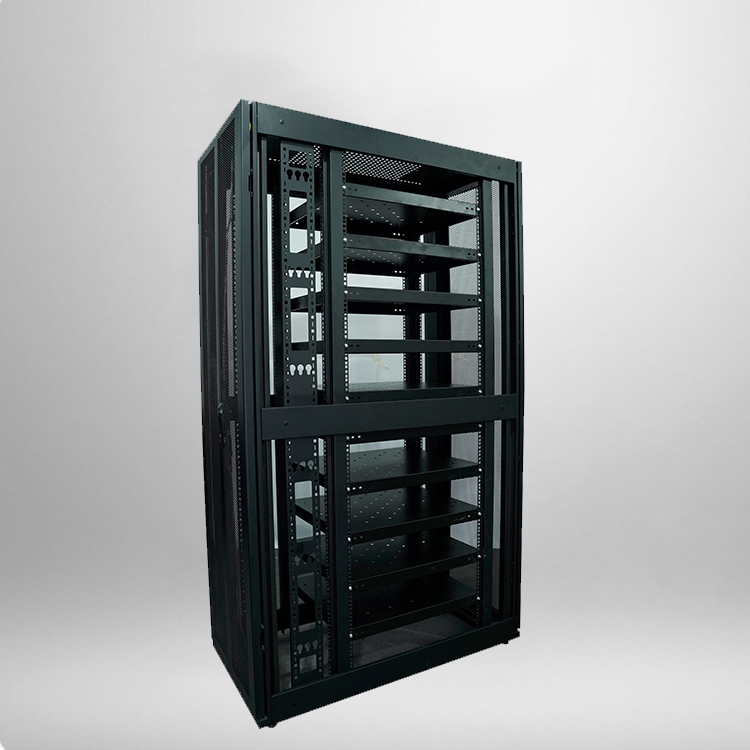
Server cabinet sizes determine how efficiently IT equipment fits and operates within a facility. Choosing the right dimensions ensures proper airflow, easy access, and future expansion capacity. This guide breaks down standard sizes, factors influencing selection, and applications across different environments.
Standard Server Cabinet Height Measurements
Height is the most critical dimension, measured in rack units (U), where 1U equals 1.75 inches (44.45 mm). Common heights include:
12U: Compact units, ideal for small offices or edge computing setups. They fit 12 standard 1U devices, such as routers, switches, and small servers.
24U: Mid-sized cabinets, suitable for medium businesses. They balance space efficiency with capacity, holding up to 24U of equipment.
42U: Industry-standard for data centers. These tall units maximize vertical space, accommodating full server racks and storage systems.
48U: Large-scale options for high-density environments, offering extra capacity for growing networks or specialized hardware.
Taller cabinets require more floor space vertically but reduce the footprint needed for the same number of devices, making them popular in data centers with limited square footage.
Width and Depth Standards
Width is standardized to 19 inches (482.6 mm) in most regions, aligning with the width of server rails and mounting brackets. This ensures compatibility with nearly all rack-mountable equipment, from servers to power distribution units (PDUs).
Depth varies more, ranging from 24 inches (609.6 mm) to 48 inches (1219.2 mm):
24–30 inches: Suitable for shallow equipment like switches, firewalls, and patch panels. Common in telecom closets or small server rooms.
36–42 inches: Fit most standard servers and storage arrays. The extra depth accommodates cable management at the rear.
48 inches: Designed for deep hardware, such as blade servers or high-density storage systems, common in enterprise data centers.
Factors Influencing Size Selection
Equipment Volume
Calculate total rack units needed by adding the U ratings of all devices. A small office with 5 switches (1U each) and 2 servers (2U each) requires at least 9U, making a 12U cabinet practical to allow for growth.
Space Constraints
In tight areas like wall-mounted setups, prioritize depth and height. Wall cabinets often max out at 18U in height and 30 inches in depth to avoid overwhelming the mounting surface.
Airflow Requirements
Taller cabinets need proper ventilation—ensure ceiling height allows for exhaust fans or ductwork. Shallow cabinets may restrict rear airflow if cables are poorly managed, so depth should align with cable routing needs.
Future Expansion
Opt for a cabinet 20–30% larger than current needs. A 24U cabinet instead of 18U leaves room for additional servers or security appliances as the network grows.
Common Applications by Size
12U–18U Cabinets
Used in small businesses, retail stores, and remote offices. They house routers, switches, and a few servers, fitting neatly in utility closets without occupying excessive space.
24U–36U Cabinets
Ideal for medium enterprises, schools, and healthcare clinics. These cabinets support multiple servers, storage devices, and PDUs, balancing capacity with manageable floor space.
42U–48U Cabinets
Found in data centers, cloud facilities, and large corporations. They form rows of high-density equipment, often paired with cooling systems to handle heat output from dozens of servers.
Sizing Mistakes to Avoid
Underestimating depth: Servers with rear cable management may exceed shallow cabinet limits, blocking airflow.
Ignoring ceiling height: 42U cabinets (over 7 feet tall) need sufficient overhead clearance for installation and maintenance.
Overlooking weight capacity: Taller cabinets must support heavier loads—ensure flooring or mounting hardware can handle the weight.


